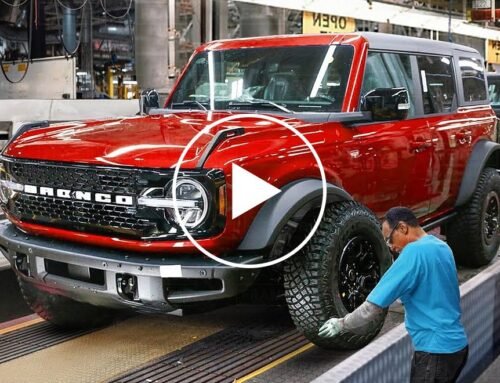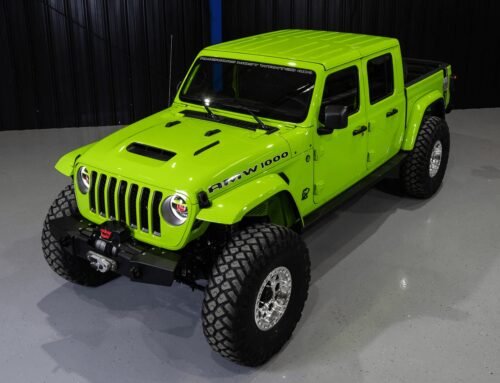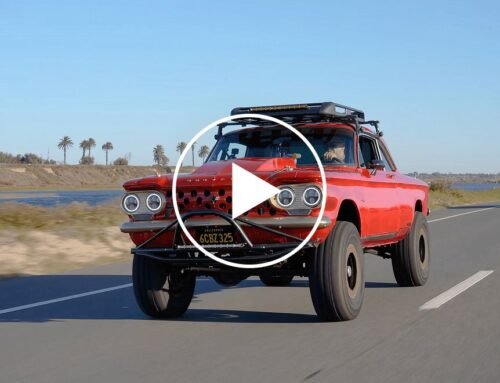VW’s first electric crossover is great, but here’s what we’d fix.
Volkswagen has a lot riding on its latest electric crossover, the ID.4. Aimed directly at sales kings like the Honda CR-V and Toyota RAV4, the ID.4 is tasked with introducing more buyers to EVs, attracting new customers to the VW brand, educating people that Tesla is not the only available electric car on the market, and ushering VW into a new era. This is a lot to ask of a new compact crossover, but in many ways, the ID.4 lives up to its billing.
CarBuzz recently spent a few days getting to know the 2021 Volkswagen ID.4 in the attractive, but sadly soldout, 1st Edition trim. While the vehicle is far from perfect, we believe it has a lot to offer buyers looking to bring home their first SUV. Here is what we love about the ID.4 and what we feel could use improvement.
Love: The Styling Is Quirky Enough
Designing an attractive EV has proved difficult for most automotive brands. Even Tesla, who produces the handsome Model S, has built some goofier-looking vehicles like the Model Y and Model X. Though we prefer the Europe-only ID.3 hatchback, the ID.4’s styling is one of its greatest attributes. It looks different enough from an ICE crossover like a Tiguan without drawing too much attention to itself. Some people we asked could instantly well the ID.4 is an EV, while others believed it could be a traditional crossover. At the front, the ID.4 gives off a happy demeanor, unlike the Tesla Model Y, which looks expressionless.
We believe that to get buyers seriously interested in EVs, they have to be attractive. An electric drivetrain shouldn’t be an excuse to make the car look too funky, like an iPod Mini on wheels. By taking a middle-ground approach to the ID.4’s styling, we think VW could steal some sales away from more quirky alternatives like the Chevrolet Bolt and Tesla Model Y.
Love: Fun Cabin Design With Retro Flare
Most EVs feature a drab, minimalist cabin, but the ID.4 breaks the model with a fun, retro-themed interior. We particularly love the white steering wheel and trim found in the 1st Edition, though we can imagine all of those surfaces might not look as fresh after years of use. The white steering wheel harkens back to models like the Beetle and Karman Ghia, a great nod to VW’s history. Other nice interior touches include play and pause emblems on the pedals, a massive glass roof with a power shade, and nicely-bolstered seats with built-in armrests.
Even the touchscreen features a fun design, with color schemes that change with the ambient lighting. The ID.Cockpit display in front of the steering wheel is a nice touch and fixes one of Tesla’s most notable issues with the Model 3 and Model Y. The compact screen delivers just enough information without being too distracting while driving.
Love: An Ergonomic Masterpiece
Since the ID.4 has no engine or transmission, the engineers could maximize space in the cabin. This interior is nothing short of an ergonomic masterpiece, proving why EVs will rapidly improve cabin design. This car might possess the best cupholder arrangement we’ve ever tested in a car. The center tunnel features two configurable storage areas with up to four cupholders. Should occupants want to put in other items besides cups or bottles, the cupholder slots are removable and interchangeable. A wireless charger sits conveniently between the storage areas, making it easy to reach while stopped.
 CarBuzz
CarBuzz
 CarBuzz
CarBuzz
 CarBuzz
CarBuzz
 CarBuzz
CarBuzz
Love: Just Enough Power (With More Coming)
All early ID.4 models will ship with a single electric motor sending 201 horsepower and 228 lb-ft of torque to the rear wheels. At around 7.5 seconds to 60 mph, a Tesla Model Y will smoke it in a straight line, but the ID.4 feels suitable to challenge conventional options like the Honda CR-V Hybrid and Toyota RAV4 Hybrid. An all-wheel-drive model is coming later in 2021, and will deliver more spry performance with 302 hp and 330 lb-ft of torque. For just $3,600 more, we think the AWD option is an attractive package. We also hope that VW sees fit to offer the faster GTX model in the US, which could go toe-to-toe with the Mustang Mach E.
At 250 miles of range in RWD guise, most drivers should be pleased with the ID.4. Yes, the Model Y offers 326 miles of range, but it costs much more and no longer benefits from a federal tax credit. The ID.4’s range is slightly lower than the Chevrolet Bolt and Hyundai Kona Electric, though we think the EPA estimates could be conservative.
 CarBuzz
CarBuzz
 CarBuzz
CarBuzz
 CarBuzz
CarBuzz
 CarBuzz
CarBuzz
Love: It’s The Right Size
VW’s best-seller is the Tiguan, so the company smartly decided to make the ID.4 a similar size. The ID.4 is 4.6 inches shorter, 1.9 inches lower, and 0.5 inches wider than a Tiguan, giving it a sleeker and more attractive stance. Conventional options like the CR-V and RAV4 offer more rear passenger and cargo space, but the ID.4 feels large enough to satisfy most buyers.
The rear seats afford 37.6 inches of legroom, but with no transmission tunnel getting in the way, it feels more comfortable back there than the numbers suggest. Though it lacks a frunk, the ID.4 conventional trunk offers decent storage capacity with 33.2 cubic feet or 64.2 with the rear seats folded.
 CarBuzz
CarBuzz
 CarBuzz
CarBuzz


Love: It’s Priced Right
Some buyers might see sticker shock when they see the ID.4 Pro’s $39,995 base price. But factoring in fuel savings and an available $7,500 federal tax credit, the ID.4 is actually cheaper than any other $40,000 crossover. VW estimates that owners will save approximately $58 per month compared to an ICE crossover, which translates to roughly $3,500 over five years.
Many people will be quick to compare the ID.4 to the Tesla Model Y, but the two are priced so differently that they are not competitors. It wouldn’t be fair to compare a Volkswagen Tiguan to an Audi Q5, right? The cheapest Model Y costs around $9,000 more than a base ID.4, or almost $17,000 after factoring in the tax credit.
Hate: Tech Hiccups
Though we enjoyed the ID.4, our experience with the car was far from trouble-free. VW’s latest infotainment system experience some hiccups, including sluggish voice command, laggy menu transitions, and a total screen freeze on one occasion. The ID.4 will need to be perfect to overcome VW’s spotty reliability track record, and our test model did not clear this benchmark. In VW’s defense, our ID.4 was an early build, and the company promised us that the infotainment software would receive an over-the-air update before going out to customers.
 CarBuzz
CarBuzz
 CarBuzz
CarBuzz


Hate: Trying Too Hard To Be Tesla
VW doesn’t want customers to cross-shopping the ID.4 with Tesla, but those comparisons will never go away as long as every automaker keeps trying to copy what Tesla got right. The ID.4 is not the only EV guilty of this, but automakers seem to believe that a car with an unconventional drivetrain needs to have unconventional controls. Getting into the ID.4 is simple enough, and we like that it doesn’t require a start/stop button to get going. Just twist the funky gear lever, and be on your way. Aside from that, though, everything else seems more complicated than it needs to be.
 CarBuzz
CarBuzz
 CarBuzz
CarBuzz


No physical buttons or knobs surround the touchscreen, just touch-capacitive controls for the volume and climate. Even the buttons on the steering wheel are touch-capacitive and feel less intuitive than conventional controls. VW hopes drivers will rely on the car’s voice command for many of these functions, but as we mentioned, that system was slow to respond, leading to distraction.
Every automaker that is trying to play catch-up to Tesla seems to be taking away the wrong messages. Tesla owners love their giant touchscreens controls, but not every buyer is ready to give up their familiar buttons. We wish VW would have spent less time making the ID.4’s controls quirky for quirkiness’s sake and more time making them intuitive.
 CarBuzz
CarBuzz
 CarBuzz
CarBuzz







